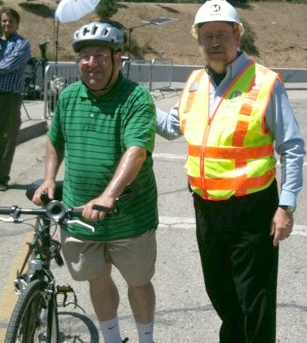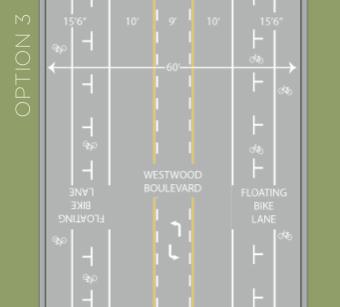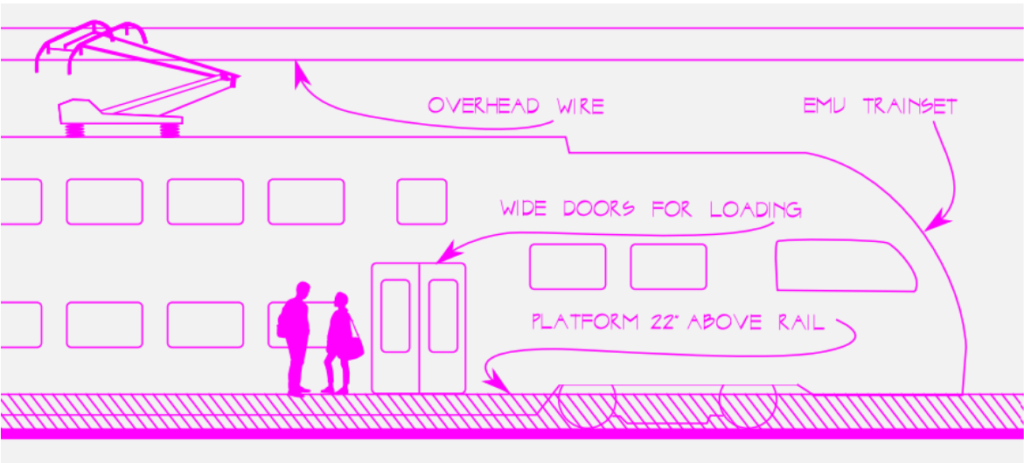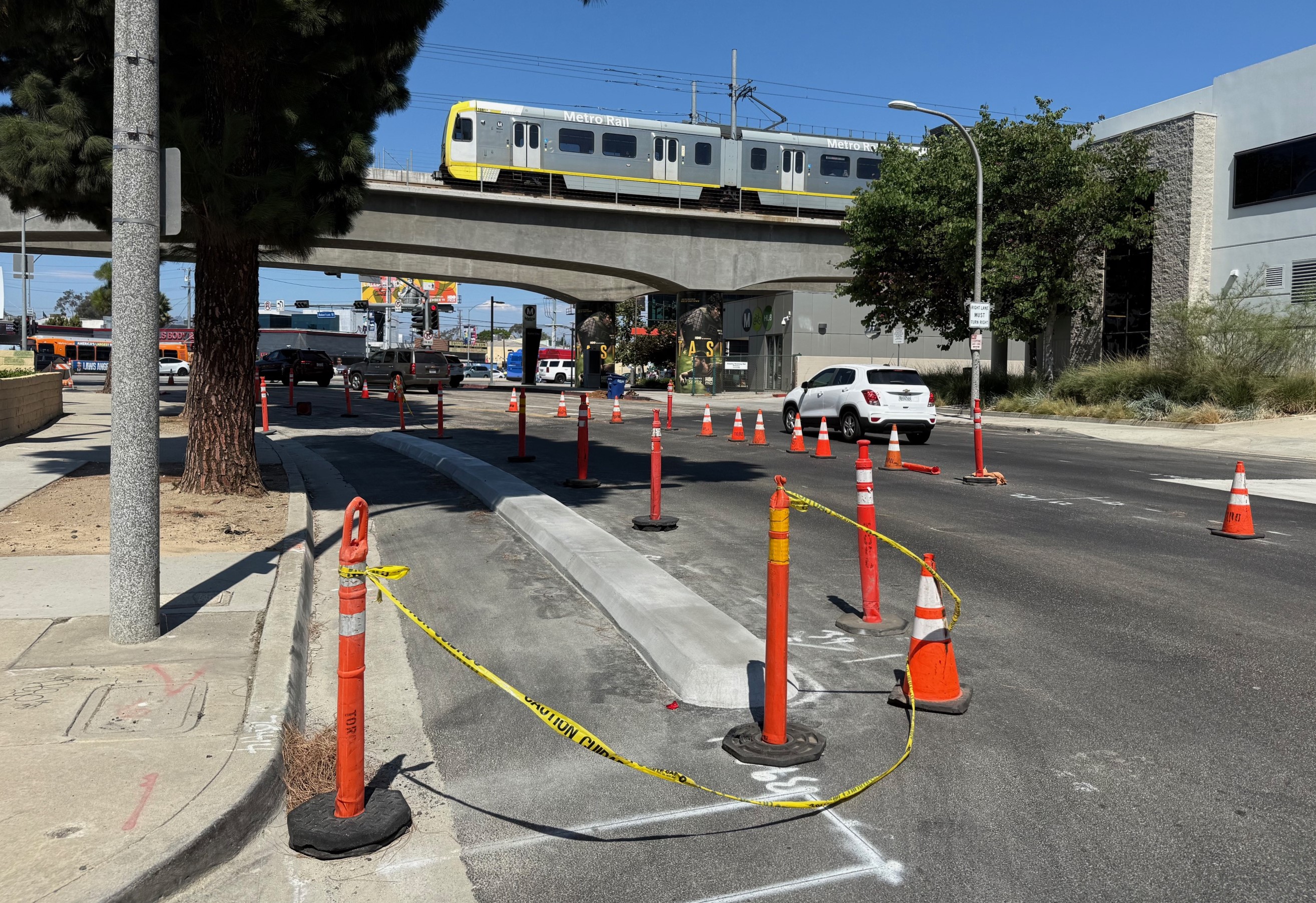
Yesterday, Streetsblog’s Damien Newton broke the news that plans for bike lanes on Westwood Boulevard between National and Santa Monica, were, in effect, dead in the water.
According to the story, CD5 Council Member Paul Koretz had unexpectedly come out in opposition to the lanes. And given the exceptional power LA councilmembers have over what does or doesn’t get built in their districts, his opposition alone is probably enough to kill the plans.
Last night, Koretz’ office released a statement confirming his stand against the lanes, which was forwarded in an email from the Westwood South of Santa Monica Homeowners’ Association, most of whose members have strongly opposed the project. While the statement came through a third party, a representative from Koretz’ office has confirmed its accuracy and authenticity.
November 13, 2013
As I announced early this year, I support exploring the option of bike lanes along Sepulveda Blvd. north from National Blvd.
At that time, I also stated my opposition to a proposal for bike lanes on Westwood Blvd.
I was subsequently approached by representatives of the cycling community, who requested that the City investigate a second and possibly less intrusive floating bike lane concept, to be employed on Westwood Blvd.
I appreciate that the cycling community has been contemplative and creative in arriving at such a suggested option, but I have come to the realization that even this concept would have substantial negative impacts on the movement of traffic, and would cause significant changes for parking conditions along this corridor. I have also received critical input from many in the community who are certain that a floating bike lane along
Westwood Blvd. would prove far too confusing and disruptive for motorists and cyclists alike, and is therefore untenable.
Consequently, I will not be supporting the exploration of the floating bike lane concept nor other options for bike lanes along this crucial commercial corridor.
I will support further investigation of the viability of Sepulveda as a corridor for bicycle infrastructure, and/or the exploration of other north/south residential corridors if they can be made viable.
………
However, many supporters of the Westwood bike lanes have questioned parts of that statement, particularly the conclusion that the lanes would be disruptive to traffic.
Which traffic, he does not say, since bike lanes would only enhance bicycle traffic on the boulevard.

As Damien’s story points out, Koretz had agreed to a formal study of a proposal for floating bike lanes, which would move next to or away from the curb as parking switches sides during the morning and evening rush hours. The plan, which has been successfully employed on the Embarcadero in San Francisco, would not have resulted in the loss of a single traffic lane or parking spot.
However, despite his promises, Koretz first suspended, then permanently halted the study. Even though sources tell me the study was halted after the first portion had been completed, showing that it would have zero impact on automotive traffic.
The only question remaining was the impact it would have on non-metered parking, such as valet stands at local restaurants, and requiring people to cross the street to get to stores and cafes they might otherwise be able to park directly in front of. If they can find nearby parking, that is, which is often difficult if not impossible at peak hours.
And which could be alleviated, at least in part, by giving customers a safe alternative to driving.
Which begs the question of how the councilmember concluded the bike lanes would create a traffic nightmare, when the study he halted showed just the opposite.
………
“We have an expectation that council offices will work with us in a public and transparent manner,” said Eric Bruins, Planning and Policy Director with the Los Angeles County Bicycle Coalition. “That did not happen in this case.”
According to Bruins, there is no viable alternative to Westwood Boulevard for bike riders seeking a direct north/south route through the area, noting that detours and hills can adversely affect ridership. And ridership on what is already one of LA’s most dangerous streets for cyclists is expected to increase exponentially once the Expo Line station opens on Westwood a few blocks south of Pico, and the boulevard becomes the only direct route between the station and the UCLA campus.
“We’re open to alternatives, but they have to work to the benefit of bike riders and keep them out of the way of vehicular traffic,” Bruins explained. “I have yet to see an alternative to Westwood that offers the same favorable characteristics of being a direct route and relatively flat.”
The problem with using Sepulveda as an alternative, as Koretz suggested, is that it is several blocks out of the way, adding nearly a mile to the 2.2 mile commute from the station to the campus. And it would require significant traffic calming or separation to encourage cyclists to take on a heavily travelled street that varies from high speed traffic, to congestion, to near gridlock conditions depending on the time of day.
In fact, sections of the roadway that already have bike lanes seldom see bike traffic, as most riders seem to prefer alternative streets.
Bruins also notes that shifting bikes onto Sepulveda would conflict with the city’s long range plans, which calls for it to be a preferred bus route, with Westwood as the preferred route for bicycles.
The obvious solution is a Westwood Blvd that doesn’t favor one form of transportation over everything else.
“We have to stop doing bike planning for cars,” he said.
………
While some bike supporters were outraged by Koretz’ decision, Bruins encourages them to channel that anger into constructive action. “We need to act like the adults here.”
He encourages bicyclists to call, write or email the councilmember’s office to demand a resumption of the study and a fair and open discussion of the subject, which he believes would inevitably result in bike lanes on Westwood, as the only viable solution that serves all road users.
Email: paul.koretz@lacity.org
Address: 200 North Spring Street, Room 440, Los Angeles, CA 90012
Phone: 213/473-7005, 310/289-0353 or 818/788-9210
Meanwhile, Calla Weimer, a dissenting member of the homeowners’ association in question, and the author of the two Westwood safety studies Damien linked to in yesterday’s story, offered a public letter to Koretz that is worth sharing.
From: Calla Wiemer
Sent: Friday, November 15, 2013 8:26 AM
To: Paul Koretz
Cc: Jay Greenstein
Subject: Westwood Blvd
Dear Councilmember Koretz,
On June 26, 2013, you stood before the Westwood South of Santa Monica Homeowners’ Association annual meeting and announced that you had given the green light for the LA Department of Transportation to study bike lanes for Westwood Blvd. Before that study could be completed, however, you ordered it suspended. Then on November 13, you halted the study permanently, saying that you “will not be supporting the exploration of the floating bike lane concept nor other options for bike lanes along this crucial commercial corridor.”
All along, your deputy for transportation was assuring those who favor bike lanes for Westwood Blvd that suspension of the study was only temporary, that the process would go forward, that the day would come for an informed public airing of views. He also asked bike advocates to refrain from doing outreach within the community until the results of the study became available.
Our community needs to have the informed public discussion we were promised. Such a discussion could provide a springboard for making Westwood Blvd a better place.
Mayor Garcetti has challenged Los Angeles to remake itself as a city of Great Streets. What is a Great Street? It is certainly not a street where cyclists are being mowed down in great numbers. Could Westwood Blvd become a Great Street? Some of us think so. Do you have the vision to facilitate the discussion?
Respectfully,
Calla Wiemer






